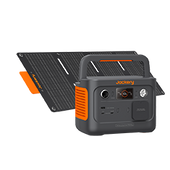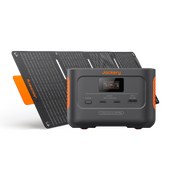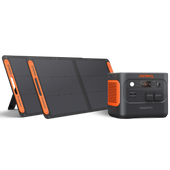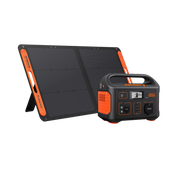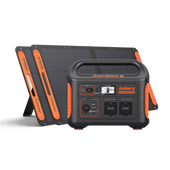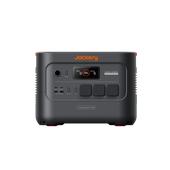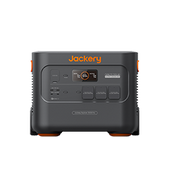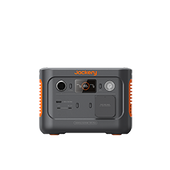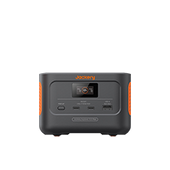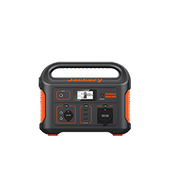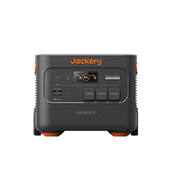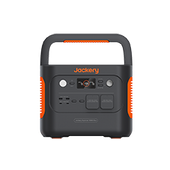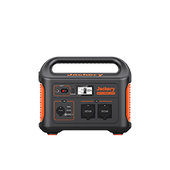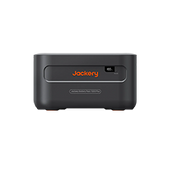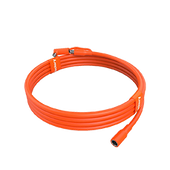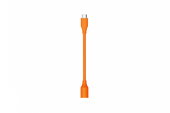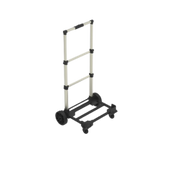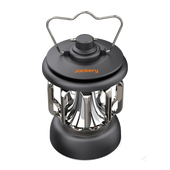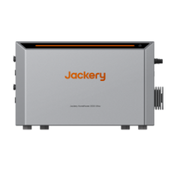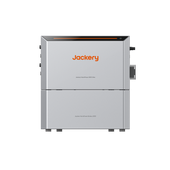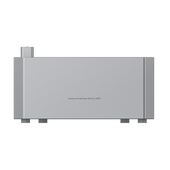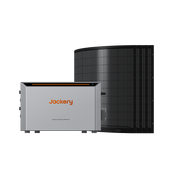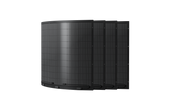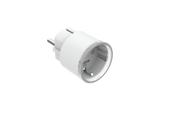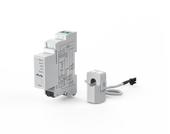The New EU Battery Regulation (EU) 2023/1542 marks a radical step in environmental protection. This measure belongs to the European Green Deal program. It aims to ensure portable power stations meet higher standards. The aspects focused on include safety, longevity, and environmental care.
This comprehensive guide helps you make smarter, greener consumption choices. It ensures your electronic devices comply with current regulations. Understanding these requirements becomes essential for European consumers and businesses.
EU Member States’ Battery Regulations and Their Scope of Application
With Regulation 2023/1542, the EU now has one consistent law on batteries, replacing Directive 2006/66/EC. The goal of the new regulation is to create harmonized standards applied in every member state. All 27 EU member states must implement these requirements identically.
1. Universal Application
The regulation applies to all new batteries placed on the EU market. This includes batteries sold separately and those integrated into devices. No exceptions exist for specific member states. The regulation covers both rechargeable and non-rechargeable battery types. Second-hand batteries entering the EU market also fall under these requirements.
2. Complete Supply Chain Coverage
All economic operators in the supply chain must comply. This includes manufacturers, importers, distributors, and retailers. The regulation covers every stage of the battery cell lifecycle. Online marketplaces and e-commerce platforms must also ensure compliance. Due diligence requirements extend to authorized representatives throughout Europe.
3. All Battery Types
The scope includes portable batteries, automotive batteries, and industrial batteries. Light means of transport batteries are also covered. No battery category is excluded from these requirements. Starting and lighting batteries for vehicles must meet the same standards. Energy storage systems in homes and businesses also require compliance.
4. Geographical Scope
Every EU member state must enforce these standards uniformly. France, Germany, Italy, Spain, and all other members follow identical rules. This creates a single market approach for battery regulation. National authorities coordinate enforcement activities across borders. Market surveillance ensures consistent application throughout the European Economic Area.
5. Cross-Border Consistency
Products certified in one EU country are accepted across the region. Harmonized testing and common documentation ensure smooth market access without multiple compliance steps. The approach reduces duplicate testing and paperwork. It further strengthens trust in EU-wide product standards.
Timeline of Regulatory Implementation Dates
The EU Battery Regulation is introduced in phases. Each requirement starts on a specific date. This phased approach allows businesses to adapt gradually.
July 28, 2023
The regulation received official approval from EU institutions. This marked the beginning of the transition period. Businesses began getting ready for the new rules. The legal text appeared in the EU’s Official Journal, and member states moved to draft their own measures.
February 18, 2024
Initial implementation began across all member states. Basic safety and labeling requirements took effect, and the regulation officially entered into force. Market surveillance authorities started monitoring compliance activities. Industry guidance documents became available to support implementation.
August 18, 2024
CE marking requirements started for applicable batteries. This includes conformity assessment procedures. Manufacturers must demonstrate compliance before market placement. Notified bodies started conducting conformity assessments. Declaration of conformity documents became mandatory for market access.
August 18, 2025
The old Battery Directive (2006/66/EC) is completely repealed. All references to previous legislation become invalid. The new regulation becomes the sole framework, and transitional arrangements for existing products will expire. Full regulatory harmonization across Europe becomes complete.
February 18, 2026
Carbon footprint requirements begin for electric vehicle batteries. Manufacturers must declare environmental impact data. This marks the start of sustainability reporting. Life cycle assessment methodologies become standardized, and carbon footprint thresholds will be established for different battery categories.
February 18, 2027
Digital battery passport implementation begins. Industrial and EV batteries require detailed electronic documentation. This creates full traceability throughout Europe. QR codes will link to comprehensive battery information while supply chain transparency becomes fully digitized.
August 18, 2028
Recycled content requirements take effect. Batteries must contain a minimum percentage of recycled materials. This promotes circular economy principles. Companies must provide proof of material origins. Recycling networks will need more capacity to meet rising needs.
August 18, 2030
Final carbon footprint requirements for industrial batteries begin. Complete environmental reporting becomes mandatory. This represents full regulation implementation, and performance classes based on carbon footprint will be established. Maximum carbon footprint limits will apply to all industrial batteries.

Key Requirements of the EU Battery Regulation Explained
The EU Battery Regulation sets clear standards for all battery products. These cover everything from sustainability to safety and reliable operation. Compliance benefits the industry, while consumers see better products and reduced environmental impact.
1. Environmental Sustainability Requirements
Since February 2025, carbon footprint declarations have become mandatory for EV batteries. Minimum recycled content requirements began in August 2028. Stricter recycling obligations ensure higher recovery rates for valuable materials. These measures support Europe’s climate neutrality goals.
2. Safety and Performance Standards
All battery types must meet mandatory safety requirements. Across Europe, hazardous substance limits are clearly defined. Mercury is restricted to 0.0005% by weight, while cadmium must stay below 0.002%. Lead restrictions of 0.01% by weight began in August 2024. Clear thresholds like these are valuable. They make it easier for regulators to enforce standards. They also give businesses a consistent framework to follow across all member states.
3. Digital Battery Passport System
From February 2027, specific batteries will require digital passports. This applies to industrial rechargeable batteries with over 2 kWh capacity. Electric vehicle batteries and light transport batteries are included. The passport contains chemical composition data, carbon footprint information, performance specifications, recycling instructions, and complete traceability details.
4. Collection and Recycling Targets
Portable batteries must achieve 63% collection rates by December 2027. Light transport batteries require 51% collection rates by December 2028. Minimum recycling efficiency targets will begin in December 2027. Recovery rates of 90% will apply to cobalt, copper, nickel, and lead. Lithium will require 50% minimum recovery rate. The aim is to ensure that valuable materials remain in the European economy.
5. Labeling and Information Requirements
Batteries must display clear capacity information and performance data. Separate collection symbols must be visible on all batteries. QR codes provide access to detailed product information and help European consumers make informed choices. Uniform labeling creates a straightforward way for authorities to confirm standards are met. It also supports consumers in making environmentally responsible decisions.
Traveler’s Essential Guide: Carrying Batteries on Flights
When flying with batteries, safety rules must be followed closely. European aviation authorities have specific requirements for battery transport. Understanding these EU battery regulations helps you move through security smoothly. The right preparation ensures convenient travel.
1. General Safety Guidelines
Keep batteries in original packaging whenever possible since they provide the best protection. Protecting terminals should be a priority, too. The aim is to prevent accidental short circuits during transport. Always use proper protective pouches when packing batteries. Store them away from any metal items, including keys and spare change. These simple steps maintain safety throughout your flight. It’s recommended to always inspect batteries for damage before travel. Never carry batteries with visible cracks or swelling.
2. Carry-On vs Checked Baggage
Airlines generally require batteries in carry-on luggage rather than checked baggage. This allows better monitoring of battery condition during flight. Cabin crew can respond quickly to any battery-related issues. Temperature variations in cargo holds pose additional risks for batteries. Lithium batteries are strictly prohibited in checked luggage on most European carriers. Spare batteries must always remain in the cabin compartment.
3. Capacity Restrictions
Most European airlines allow portable power stations under 100Wh without special permission. Batteries between 100-160Wh may require airline approval. Passenger flights restrict batteries that go beyond 160Wh capacity. Review your device’s watt-hour rating ahead of travel. Maximum quantities of spare batteries may be limited per passenger. Professional equipment batteries often require special cargo arrangements.
4. Documentation and Preparation
Carry documentation for specialized batteries when required. Ensure batteries are properly charged but not fully charged before travel. Some airlines recommend 30-50% charge levels for safety. You should keep battery specifications readily available for security personnel and print copies of manufacturer specifications for quick reference. Contact your airline 48 hours before departure for high-capacity batteries.
5. Best Practices for European Travel
Pack batteries in dedicated protective cases with terminal protection and keep them cool and away from direct sunlight or heat sources. Also, avoid overcharging batteries immediately before departure. Consider using battery cases specifically designed for air travel compliance. Label battery cases clearly with capacity information. Last but not least, remove batteries from devices when possible for separate storage.
Recommended Product: Jackery Explorer 100 Plus Portable Power Station
At Jackery, we recognize how European energy needs are changing with new EU battery guidelines. Our dedication to sustainable power solutions matches EU requirements perfectly. We create products that go beyond compliance while delivering outstanding results.
Our Jackery Explorer 100 Plus Portable Power Station represents our dedication to innovation and compliance. This compact device offers reliable power for your electronic needs. It combines advanced battery technology with user-friendly features for maximum convenience. Its top features and advantages include:

- Regulatory Compliance Features
The Jackery Explorer 100 Plus Portable Power Station meets all UN 38.3 battery shipping requirements. This ensures complete safety compliance when traveling in Europe. Our device meets all current EU battery regulation requirements. We ensure dependable performance for both air and rail travel throughout Europe.
- Advanced LiFePO4 Battery Technology
This portable power station features an advanced LiFePO4 battery system. The system delivers 2,000 cycles while keeping 80% of its capacity. It maintains performance for 8 years even with everyday charging. This extended life helps the environment and maximizes value for European customers.
- Compact and Lightweight Design
Weighing only 965 grams, this solar generator places portable power in your palm. The sleek design fits perfectly into European travel plans and outdoor pursuits. It slides easily into carry-on bags for European flights. You’ll have dependable power no matter where you explore.
- Multiple Charging Options
We provide three convenient charging methods for maximum flexibility. Solar charging takes just 2 hours with our SolarSaga 100W panel. Car charging requires 2.5 hours for complete power restoration. USB-C charging offers a 4-hour charging solution for indoor use. This versatility ensures you’re never without power in any European location.
- Enhanced Safety Protection
The Jackery Explorer 100 Plus Portable Power Station features six forms of comprehensive protection. These include low-temperature protection for harsh European winters. Short circuit protection prevents electrical hazards during use. Temperature safeguards the keep operation in warm weather. Built-in systems also protect against current surges, voltage spikes, and low power levels.
- Superior Build Quality
Our device features UL 94V-0 rated flame-retardant materials for maximum safety. Class 9 impact resistance protects against drops up to 0.9 meters, and high-temperature protection operates reliably up to 60°C. It also has intelligent dual chip protection, which works with five temperature probes for precise control. This durability suits Europe’s varied climate conditions.
- Environmental Sustainability
Our every package is 100% recyclable and follows IST2A requirements. The design handles extreme temperatures, pressure, falls, and impacts during European transport. The Jackery Explorer 100 Plus Portable Power Station enables efficient, eco-conscious solar charging. Advanced IBC systems maximize sunlight capture for superior solar output.
- Versatile Power Output
The device provides 128W AC Pure Sine Wave power output for sensitive electronics. Dual 100W PD charging supports rapid device charging throughout Europe. Three devices can charge simultaneously for maximum convenience. It’s ideal for both European camping experiences and home power emergencies.
Conclusion
The EU Battery Regulation 2023/1542 transforms how we approach battery safety and sustainability across Europe. These comprehensive requirements ensure safer products while supporting environmental goals. Understanding implementation timelines helps consumers and businesses prepare effectively. These standards help create superior products while protecting our environment.
At Jackery, we aim above regulatory requirements through creative design and eco-friendly practices. We deliver excellence to European customers while meeting all EU standards. Visit our website to browse our complete range of sustainable energy products designed specifically for European markets and regulations.







